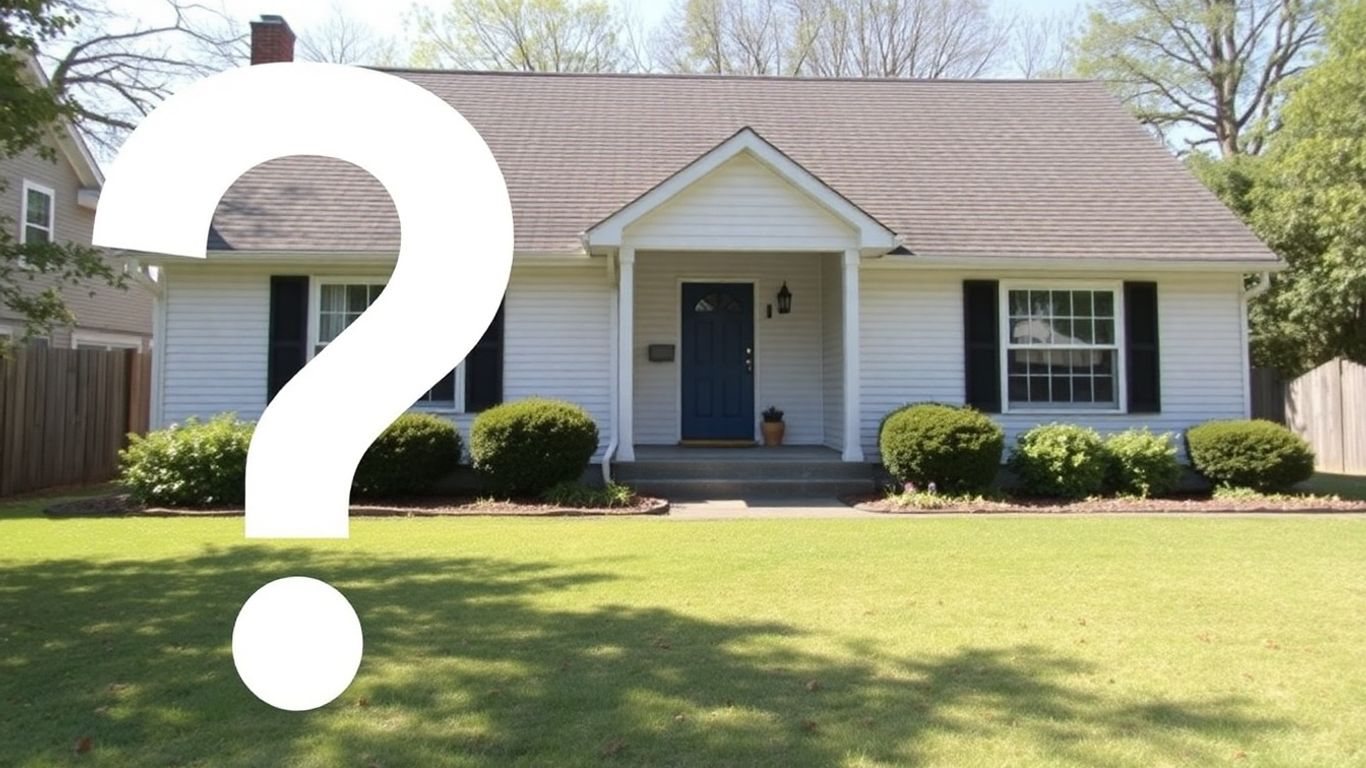Can You Refinance a Reverse Mortgage? Exploring Your Options in 2025
November 19, 2025
Can you refinance a reverse mortgage? Yes! Explore options in 2025 to lower rates, access equity, or adjust terms. Learn when it makes sense.

Thinking about refinancing your reverse mortgage? It's a question many homeowners ponder as their financial needs and home values change over time. The good news is, yes, you can refinance a reverse mortgage, much like a traditional one. But just because you can, doesn't always mean you should. Let's explore what refinancing a reverse mortgage in 2025 looks like and if it's the right move for you.
Key Takeaways
- Yes, you can refinance a reverse mortgage to potentially get better terms, similar to a traditional mortgage.
- Refinancing makes sense if your home value has increased, interest rates have dropped, or you need to adjust loan terms.
- Key reasons to refinance include lowering interest rates, accessing more home equity, and adding a spouse to the loan.
- Be aware of the costs involved, including fees and potential new mortgage insurance premiums, and ensure the benefits outweigh them.
- HUD's '5-times benefit rule' and other eligibility criteria, like the 18-month rule, must be met for a refinance to proceed.
Understanding Reverse Mortgage Refinancing
So, you've got a reverse mortgage, and you're wondering if you can change it up. The short answer is yes, you absolutely can refinance a reverse mortgage. Think of it like trading in your old car for a newer model – you're essentially replacing your existing loan with a brand new one, hopefully with better terms. This process is pretty similar to when you first got your reverse mortgage. You'll need to go through an application, get some counseling, have your home appraised, and there will be some costs involved. But it's not exactly the same as your first go-around. There are a few specific rules you'll need to meet, like making sure you're far enough out from your original loan or a previous refinance.
Can You Refinance a Reverse Mortgage?
Yes, you can. It's a common financial move for homeowners looking to improve their financial situation in retirement. Just like refinancing a regular mortgage, you're looking to get better terms, maybe a lower interest rate, or access more of your home's equity. It's a way to adjust your loan to fit your current needs and financial goals. Refinancing a reverse mortgage means you're taking out a new reverse mortgage to pay off and replace your existing one.
When Does Refinancing Make Sense?
Refinancing isn't always the best move, and it definitely costs money, so you want to make sure it's worth it. Here are a few situations where it might make sense:
- Your home's value has gone up: If your house is worth more now than when you first got the loan, you might be able to borrow more money. The amount you can borrow is tied to your home's value, so an increase can mean more cash for you.
- Interest rates have dropped: If the interest rates available now are lower than what you're paying on your current reverse mortgage, refinancing could save you money on interest over time. Even though you don't make monthly payments, interest still accrues.
- You want to add your spouse: If your spouse isn't on the original loan, refinancing can be a way to add them. This can help protect them, especially if something happens to the primary borrower.
- HECM limits have increased: The maximum amount you can borrow through a Home Equity Conversion Mortgage (HECM) can change each year. If these limits have gone up, you might be able to access more equity.
Refinancing involves new closing costs and fees. It's important to compare these costs against the potential benefits, like a lower interest rate or access to more cash, to see if it truly makes financial sense for your specific situation.
Key Differences from Traditional Refinancing
While the basic idea of refinancing is similar, there are some important distinctions when you're dealing with a reverse mortgage:
- Age Matters: Unlike traditional mortgages where your age isn't a factor, with a reverse mortgage, your age (and the age of any co-borrowers) plays a role in how much you can borrow.
- The 5-Times Benefit Rule: This is a HUD rule designed to protect you. It basically ensures that you don't take out so much money initially that your loan balance exceeds five times the amount you received in the first year. Refinancing requires you to meet this rule again.
- Time Since Last Loan: You generally need to wait a certain period after your original reverse mortgage or a previous refinance before you can do it again. Typically, this is at least 18 months from the original loan date and 12 months from a prior refinance.
- Appraisal Needed: Just like the first time, you'll need a new appraisal to determine your home's current value for the new loan.
Reasons to Consider Refinancing Your Reverse Mortgage
So, you've got a reverse mortgage, and maybe you're wondering if it's time to shake things up. It's totally possible to refinance a reverse mortgage, just like you might refinance a regular home loan. But does it actually make sense for your situation? That's the big question. Refinancing isn't free, and it involves some paperwork, so you want to make sure the benefits you get down the road are worth the costs and effort now.
Lowering Your Interest Rate
This is a big one for any kind of refinancing, and it applies to reverse mortgages too. Even though you're not making monthly payments (as long as you keep up with taxes, insurance, and the home itself), interest still adds up on the loan balance. If interest rates have dropped since you first got your loan, refinancing could mean you pay less interest over time. It's worth checking what the current rates are for someone in your situation, as they can change based on things like your age and the value of your home.
Accessing Increased Home Equity
Home values can go up, right? If your home is worth more now than it was when you took out your reverse mortgage, you might be able to borrow more money. The amount you can borrow is often tied to your home's value and the HECM lending limits, which can also increase over time. If either of those has gone up, refinancing could let you tap into more of your home's equity. This is especially true if you got your loan when the lending limits were lower.
Adjusting Loan Terms and Disbursement Options
Life happens, and your financial needs might change. A reverse mortgage can last a long time, and a lot can happen during those years. Refinancing gives you a chance to change how you receive your money. Maybe you started with a lump sum but now prefer monthly payments for a set term or for life. Or perhaps you want to switch from a fixed disbursement to a line of credit. Refinancing can open up these possibilities.
Adding a Spouse to the Loan
This is a really important one, especially for spouses who might have been younger than the primary borrower when the original loan was taken out. In the past, sometimes a younger spouse had to be removed from the title to qualify for the loan. While they could stay in the home, they couldn't access any funds. Today's rules allow for spouses to be added as borrowers or as "eligible non-borrowing spouses." This can give them access to loan proceeds and, importantly, ensures they have long-term protections and can remain in the home.
Refinancing isn't just about getting more cash. It can also be about getting better terms, like a lower interest rate or a more flexible way to receive your funds. It's about making the loan work better for you as your life continues.
Here's a quick look at why you might consider refinancing:
- Lower Interest Rates: Potentially save money on interest charges over the life of the loan.
- Increased Borrowing Power: Access more of your home equity if its value has risen or lending limits have increased.
- Spousal Protections: Add a younger spouse to the loan for their financial security and right to stay in the home.
- Flexible Payouts: Change how you receive your funds, from a lump sum to monthly payments or a line of credit.
Navigating the Refinancing Process in 2025
The Refinancing Application Steps
Refinancing your reverse mortgage in 2025 uses a process similar to your original loan, but some extra checks can make it feel a bit different. Here's a typical step-by-step overview:
- Apply through a reverse mortgage lender and provide info about your home and your current loan.
- Get a professional home appraisal to see your new property value.
- Submit supporting documents, including recent tax info and proof of insurance.
- Schedule a HUD-approved counseling session, unless you qualify for a waiver (more on this below).
- Review the lender’s disclosures, especially the HUD-92901 form—they have to give it to you within three business days.
- Wait for loan approval, then close once everything checks out.
Making sure your paperwork is ready and deadlines are clear can really smooth out the experience, so keep all communications from your lender in one place.
Understanding HUD's 5-Times Benefit Rule
HUD wants to make certain you’re not refinancing just to rack up more fees. So they enforce the 5-times benefit rule:
- The new loan must provide at least five times the net proceeds relative to the closing costs.
- For example, if costs are $9,000, you must gain at least $45,000 in new usable funds.
If you’re just adding a spouse or scoring a major drop in interest rate, the rule might not apply in the same way. But in most cases, passing this test is required.
Counseling Requirements and Waivers
Counseling remains a big part of the process, but there are new waivers for 2025:
- You can skip new counseling if:
- You took counseling for your original reverse mortgage.
- You sign the HUD-92901 form (cost and benefit summary).
- Your new loan provides at least five times the cost in net proceeds.
- It’s been 5 years or less since your first FHA reverse mortgage.
If any of these don’t fit, you’ll need to meet with a HUD counselor. This session will explain risks, benefits, and answer your questions.
Updated MIP Calculations for Refinances
Mortgage Insurance Premiums (MIPs) can cost thousands if you’re not careful, but most refinances now qualify for significant credits:
- HUD credits part of your original upfront MIP towards your refinance (often most or all of that 2% fee).
- On your very first refinance, these credits tend to wipe out the new MIP charge. On later refinances, you only get credit from your last loan—but it’s still helpful.
- Your lender is required to show you a detailed breakdown of new fees and credits with the HUD-92901 form in the first three days, so there are no surprises.
If you’re expecting to refinance more than once, know that you’ll get less in MIP credits each time. Timing and planning can save you real money over a few years.
Exploring Different Refinance Options

So, you're thinking about refinancing your reverse mortgage. That's totally understandable! It's not a one-size-fits-all situation, and there are a few different paths you can take. Let's break down what those options look like.
Refinancing into a New Reverse Mortgage (HECM)
This is probably the most common route. Basically, you're getting a brand new Home Equity Conversion Mortgage (HECM) that pays off your old one. It's very similar to when you first got your reverse mortgage. You'll go through the application process again, get your home appraised, and yes, there will be some upfront costs involved. But the big draw here is that you'll need to meet current HECM guidelines, which might have changed since your first loan. Plus, you'll have to pass the
Important Considerations Before Refinancing

So, you're thinking about refinancing your reverse mortgage. That's a big step, and it's smart to really think it through before you jump in. It's not quite like refinancing a regular mortgage, and there are some specific things you'll want to look at to make sure it's the right move for you.
Evaluating Refinancing Costs vs. Benefits
Refinancing a reverse mortgage isn't free. You'll run into closing costs, just like when you first got the loan. These can add up, often somewhere between 2% and 5% of the total loan amount. This includes things like appraisal fees, title insurance, and lender fees. You really need to crunch the numbers to see if the potential benefits, like a lower interest rate or accessing more cash, outweigh these upfront expenses. It's easy to get excited about getting more money, but you have to be sure it's worth the cost.
It's important to get a clear picture of all the fees involved. Don't be afraid to ask your lender to break down every single cost. Sometimes, a seemingly small fee here or there can add up quickly, making the whole deal less attractive.
The 18-Month Rule and Other Eligibility Criteria
There are some rules you need to follow to even be considered for a refinance. For most reverse mortgages, especially the FHA-insured Home Equity Conversion Mortgage (HECM), your current loan needs to be at least 18 months old. This rule is in place to prevent people from refinancing too often just to pay fees. There are exceptions, though. For instance, if you're looking to add a spouse to the loan or if there's a significant drop in interest rates, you might be able to refinance sooner. Always check with your lender about the specific timing requirements for your situation.
Protecting Non-Borrowing Spouses
This is a really big deal if you have a spouse who isn't on the original reverse mortgage. If you pass away and your spouse isn't a borrower, they could be forced to move out of the home if the loan balance is paid off. Refinancing can sometimes be a way to add a non-borrowing spouse to the loan, making them a borrower and giving them the right to stay in the home as long as they meet the loan terms. It's a complex process, so discussing this with your lender and a counselor is super important if this applies to you.
Alternatives to Refinancing
Sometimes, refinancing isn't the best or only option. Have you thought about other ways to get the funds you need? For example, if your main goal is just to change how you receive money from your reverse mortgage, you might be able to adjust your disbursement plan without a full refinance. There are also things like home equity investments, which are different from loans and might offer another way to access your home's value without taking on more debt. It's always good to know all your options before settling on one path.
So, Can You Refinance That Reverse Mortgage?
Alright, let's wrap this up. The short answer is yes, you can refinance a reverse mortgage. It's not a closed door. But, just because you can doesn't always mean you should. Think of it like this: refinancing your regular mortgage often makes sense to snag a lower rate or pull out some cash. With a reverse mortgage, it's similar, but you've got to really look at the numbers. Maybe your home's value shot up, or interest rates have dropped since you first got the loan. Those could be good reasons to look into it. Sometimes, you might even want to add a spouse to the loan. But remember, there are costs involved, and you need to make sure the benefits really outweigh those expenses. It’s not a decision to rush into, so take your time, do your homework, and figure out what works best for your situation in 2025.
Frequently Asked Questions
Can I really refinance my reverse mortgage?
Yes, you can! Just like a regular home loan, you have the option to refinance your reverse mortgage. Think of it as trading your old loan for a new one that might have better terms for you. It's a way to potentially get more money out of your home or get a better interest rate.
When is it a good idea to refinance my reverse mortgage?
It makes sense to refinance if your home's value has gone up a lot since you first got the loan, or if interest rates have dropped. It can also be a good move if you want to add your spouse to the loan so they're protected, or if you need to change how you receive your money, like switching from a lump sum to monthly payments.
What's the difference between refinancing a reverse mortgage and a regular mortgage?
Refinancing a reverse mortgage means you're getting a new reverse mortgage to replace the old one. Refinancing a regular mortgage means you're replacing it with another regular mortgage. With a reverse mortgage refinance, you still need to be 62 or older and use the home as your main residence. You also have to meet specific rules, like the '5-times benefit rule,' to make sure the refinance is actually helpful for you.
What is the '5-times benefit rule'?
This rule is in place to make sure that refinancing your reverse mortgage actually helps you and isn't just costing you extra money in fees. Basically, the new loan needs to give you at least five times more in benefits (like extra cash) than it costs you to do the refinance. It's a way to prevent you from paying for a refinance that doesn't really pay off.
Do I need to get counseling again if I refinance?
Usually, yes. Most of the time, you'll need to go through a counseling session again with a special counselor to make sure you understand the new loan. However, there are some exceptions, like if you've had counseling recently, the new loan offers a big financial gain, or it's been less than five years since your very first reverse mortgage.
What are the costs involved in refinancing a reverse mortgage?
Refinancing comes with costs similar to when you first got your reverse mortgage. These can include fees for things like the home appraisal, title search, and loan origination. There's also mortgage insurance. The good news is that for refinances, some of these costs, especially the mortgage insurance, might be lower because you might get credit for what you already paid.













Get in touch with a loan officer
Our dedicated loan officers are here to guide you through every step of the home buying process, ensuring you find the perfect mortgage solution tailored to your needs.
Options
Exercising Options
Selling
Quarterly estimates
Loans
New home

Stay always updated on insightful articles and guides.
Every Monday, you'll get an article or a guide that will help you be more present, focused and productive in your work and personal life.









.png)
.png)
.png)
.png)
.png)
.png)
.png)
.png)
.png)
.png)
.png)
.png)
.png)
.png)
.png)
.png)
.png)
.png)